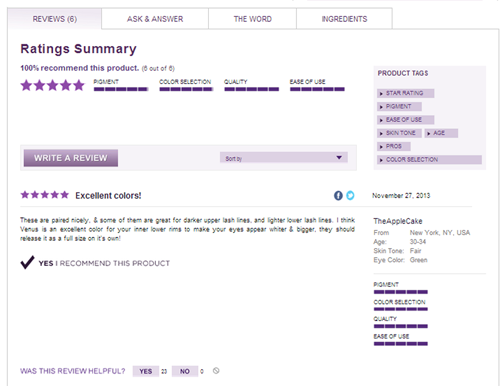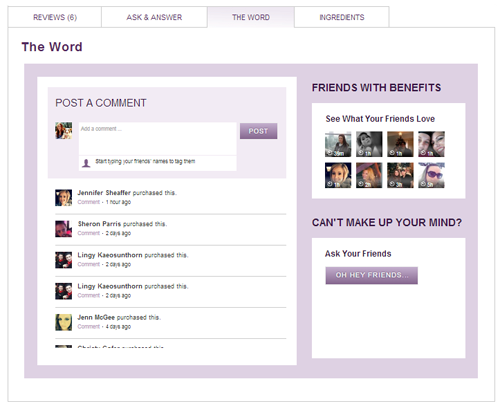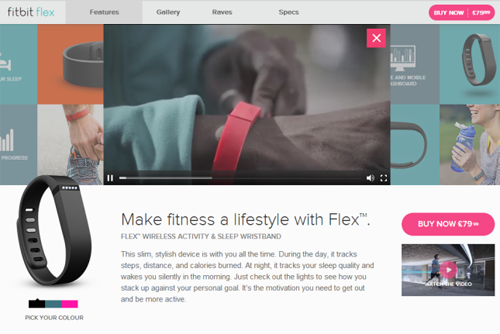The Modern Product Page

At 5 years old, I was positive that robotic maids and flying cars would be part of my life by the time I received my first driver's license.
Watching too many episodes of "The Jetsons" likely fueled my high hopes for technology.
More than 20 years later, four wheels are still a staple of the modern car, but technology has advanced in other areas. Shopping, for example, is an entirely different experience than it was two decades ago, as today's consumers have the choice to browse and buy from desktop and mobile devices or at traditional retail stores.
Despite the convenience of online shopping, consumers still see many advantages to shopping in traditional brick-and-mortar stores. Luckily, technology is providing online retailers with ways to make the virtual shopping experience more similar to the traditional one - and it all starts with their product pages.
Put inventory on display.
The biggest advantage of shopping in a brick-and-mortar store is the ability for consumers to pick up, feel and examine their potential purchases. To bridge the gap between store shelves and ecommerce product pages, Internet retailers must display their inventory with high-resolution and interactive product photography. According to David-Dror Davidoff, chief revenue officer at ClickTale, product imagery that allows consumers to zoom in, as well as view items from every angle, provides online retailers with a better chance at conversion.
"The product's photo must enable shoppers to enlarge it," said Davidoff. "The enlarged photo should be viewable from different angles, enabling shoppers to visually 'stroll around' the product. They will always prefer to see the enlarged photo bigger, more in detail and free of visual distraction."
To make the virtual shopping experience even more realistic, retailers should add videos to their product pages. Videos are not only more informative than images, but they also provide consumers with a better idea of how a product works and how it looks when it's in-use. Fitbit, for example, offers short videos on its product pages that demonstrate everyday use and highlight key features (image A). To incorporate video into an online storefront, retailers can leverage service providers like Fluid Retail or Liveclicker or can take the do-it-yourself approach by creating and hosting videos on YouTube.
Image A: Fitbit features a 'Day in a Life of a Flex User' video.
Answer questions.
Even with the highest-quality product images and videos, consumers may still be hesitant to buy. According to Davidoff, shoppers need and want information but don't want to work hard to get it, so the more information provided on a product, the more a visitor will engage and proceed to checkout.
Although including descriptions, availability, sizing and color options on product pages is vital, those details are just the tip of the virtual iceberg. Apparel retailer Elie Tahari, for instance, also provides specifics like fabric content, care instructions and the company's return policy. Plus, the company further eases consumer uncertainty by offering a "Fit Guide" to help customers find the right size based on their individual measurements. Sizing guides like this, along with technology like virtual fitting rooms (for a list of virtual fitting room technology, visit wsm.co/tryon2014), are instrumental in making consumers more confident in their purchasing decisions, which, in return, can increase conversions and decrease the number of returns for retailers.
Encourage the purchase.
Traditional retailers depend on their employees to provide helpful tips and encouragement, which is a luxury ecommerce retailers don't have. Online, user reviews can help fill that void, as they influence 90 percent of consumers' buying decisions according to a 2013 Dimensional Research study.
Online retailers should note, however, that the most influential review sections are interactive, informative and social. Beauty retailer Urban Decay, for example, provides site visitors with an aggregated summary of its consumer ratings at the top of its review section (image B). The summary highlights consumers' opinions on products' most important features, such as pigment, color selection, quality and ease of use. Moreover, the individual reviews offer information such as a reviewer's skin tone and eye color, which can help other customers better relate to the reviewer and trust the advice. It is also important to note that Urban Decay's product page showcases social profiles of consumers who have purchased the item, as well as enables shoppers to use social networks to ask friends for advice (image C).

Image B: Urban Decay features an aggregated 'Ratings Summary'.

Image C: Customers can ask their Facebook friends for advice through UrbanDecay.com before making purchases.
Close the sale.
Answering all of a consumer's questions doesn't guarantee conversion, which is why it is up to online retailers to create product pages that move shoppers toward purchase.
For starters, product pages should include any relevant promotional information. A field for a coupon code on the checkout page can lead customers to go offsite to search for a discount code, and once a customer leaves the checkout page, it is not guaranteed that they will return.
In addition to promotional information, online retailers should always feature security policies and symbols on their product pages. Even the biggest brands are not immune to security breaches, and shoppers know that.
The Future of Ecommerce is Bright
The good news for Internet retailers is that the ecommerce industry is growing, and the gap between the traditional store shelf and the digital product page is diminishing. Even if flying cars eventually become the "norm," consumers will still enjoy the convenience and comfort of online shopping - especially when product pages outdo salespersons.

Subscribe to Our Newsletter!
Latest in Marketing









